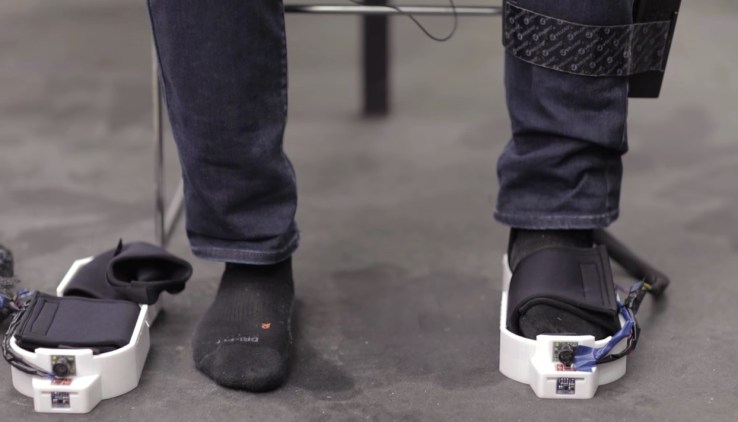

If you’ve ever worn a spacesuit during a moonwalk or EVA, and I know a lot of you have, you were probably frustrated by how difficult it was to move around — both with the restrictions of the suit itself and the limitations on what you can see and feel. Researchers at MIT’s Man Vehicle Lab want to make things easier with boots and other wearables that give the user haptic feedback warning them of obstacles they might not see.
It’s a serious consideration when you’re on a mission where every second counts; we can all have a laugh now seeing footage of astronauts biffing it into moon dust, but if that uses up valuable breathable air or takes place during a time-sensitive operation like a rescue, it’s not so funny any more.
That’s why Professor Leia Stirling and grad students at MIT are looking into alternative ways to keep astronauts informed of what’s around them so they can not just avoid stumbles, but make informed decisions.
“There’s a lot of different questions that we’re asking within the lab to help with different decisions that need to be made,” Stirling told TechCrunch. “This particular project looked at how can we potentially help someone navigate their environment and avoid obstacles at the same time?”
The solution is boots with built-in range-finding sensors that use haptic feedback (vibrations) to tell the user how close they are to an unseen moon rock or antenna. They start slow, and speed up as the obstacle gets closer, a bit like the proximity alert some cars have when you’re backing into a parking spot. (Or, it occurred to me, like Jaws.)
Stirling’s research is focused on this kind of “decision-making assist” systems; astronauts have to juggle a lot of data and you can’t just throw it all up on a heads-up display and hope they can make sense of it. Multimodal presentation is the rule; maybe the haptic feedback works, but it helps if there’s a blinking dot in the HUD, or a sound that only triggers if an object is approaching too fast.
“The Man Vehicle Lab is really interested in human-machine interactions,” Stirling said. “How do we enable the appropriate trust in those systems so that the person can use the information and make the right decision?”
The boots, currently just prototypes, aren’t quite ready to launch into space, but they have been tested by members of the Mars Desert Research Society, which maintains a facility in the Mars-like conditions of the Utah desert.
And the technology, of course, could easily be reimagined. You can read more about this and other projects from the MVL here; there was plenty more stuff we saw in our visit, both past and future projects, that are worth a look.

